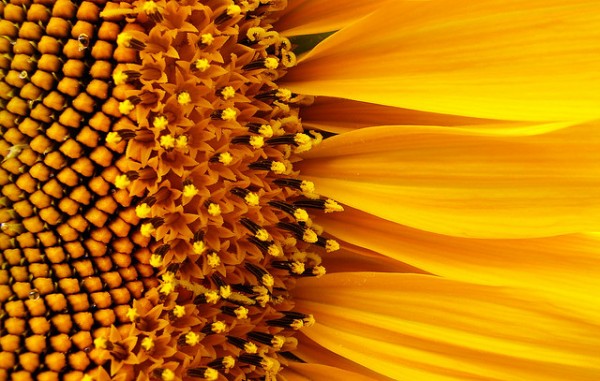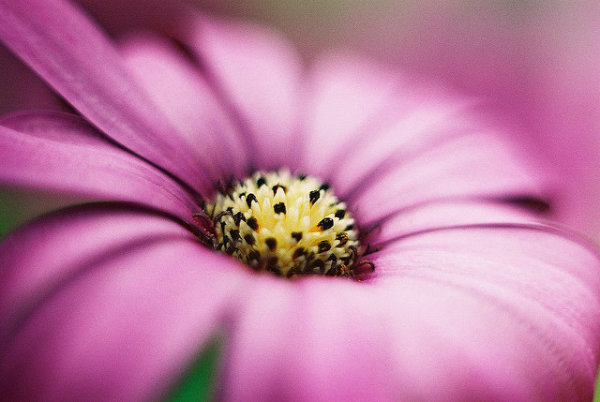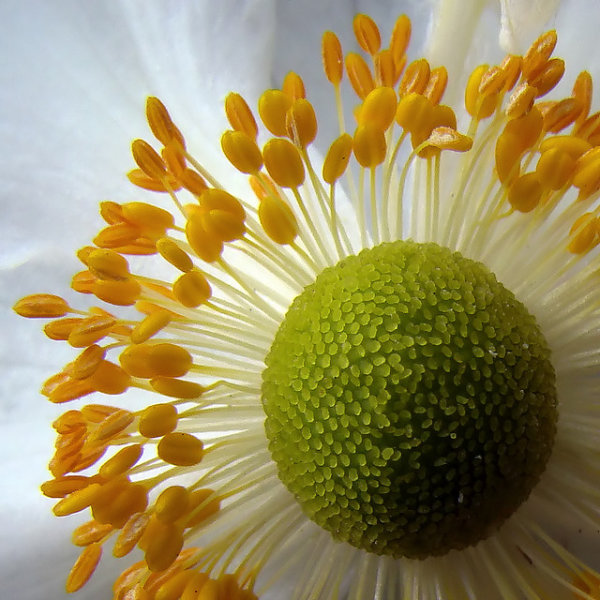Tripods - When Do You Need One?
By Sheila Crosby
With very rare exceptions, the main subject of your photograph must
be sharp - not necessarily the whole picture, but certainly the
subject. Even if you want the subject blurred, to give a sense of
movement, then the background must be sharp. And you'll get the
sharpest photographs by using a tripod.
Sony Magnetic Products - Sony Vct-60Av Tripod - Floor Standing Tripod - 18.9 inch To 57.6 inch Height - 6.6 Lb Load Capacity

 There are three ways your photo can be unsharp: either the focus is
wrong, the camera moved, or the subject moved. Here's how to tell
the difference:
* If something in front or behind the subject is nice and
sharp, then the problem is poor focus. For example, your baby is
blurred, but the carpet underneath is sharp.
* If the background is sharp, but the subject is blurred, then
the subject moved. Sometimes you can do this on purpose to give a
sense of movement, but that's outside the scope of this article.
* If everything is unsharp, then it's camera shake. Serious
camera shake will leave everything streaked in the direction you
moved the camera, usually vertically.
This article deals with how to avoid camera shake.
Most of the time, you can simply hold the camera in your hand.
Obviously, this is much quicker, and gives you time to grab a shot
of that yeti before it disappears.
The great disadvantage of tripods is that they slow you down.
Perhaps the clouds move while you're setting it up, or the sun
sets, or people waiting for you have time to get bored.
The great advantage of tripods is that they slow you down. You have
time to see the coke can in the foreground, and move it, before you
take the shot.
So when should you use a tripod?
* The longer the focal length of the lens, and the longer the
exposure, the more time the camera has to wobble. You will need a
tripod if the shutter speed is longer than the reciprocal of the
focal length (e.g., 1/60th for a 50mm lens, or 1/500th for a 500mm
lens).
* The bigger the enlargement, the more obvious any camera shake
becomes. If you're hoping to make a 24" x 16" enlargement, you need
a tripod.
* If you're hoping to sell your photos for stock photography,
you need a tripod.
* Macro subjects -- anything over 1/4th life size -- always
need a tripod because you're so close to your subject.
* Negatives bigger than 35mm are wasted unless you use a
tripod. Besides, plate cameras are too heavy to comfortably hold by
hand.
CHOOSING A TRIPOD
Miller DS-10 Aluminum Tripod System - consists of: DS-10 Fluid Head, DS 1-Stage Tripod, Mid-Level Spreader and Softcase - Supports 10 lbs
There are three ways your photo can be unsharp: either the focus is
wrong, the camera moved, or the subject moved. Here's how to tell
the difference:
* If something in front or behind the subject is nice and
sharp, then the problem is poor focus. For example, your baby is
blurred, but the carpet underneath is sharp.
* If the background is sharp, but the subject is blurred, then
the subject moved. Sometimes you can do this on purpose to give a
sense of movement, but that's outside the scope of this article.
* If everything is unsharp, then it's camera shake. Serious
camera shake will leave everything streaked in the direction you
moved the camera, usually vertically.
This article deals with how to avoid camera shake.
Most of the time, you can simply hold the camera in your hand.
Obviously, this is much quicker, and gives you time to grab a shot
of that yeti before it disappears.
The great disadvantage of tripods is that they slow you down.
Perhaps the clouds move while you're setting it up, or the sun
sets, or people waiting for you have time to get bored.
The great advantage of tripods is that they slow you down. You have
time to see the coke can in the foreground, and move it, before you
take the shot.
So when should you use a tripod?
* The longer the focal length of the lens, and the longer the
exposure, the more time the camera has to wobble. You will need a
tripod if the shutter speed is longer than the reciprocal of the
focal length (e.g., 1/60th for a 50mm lens, or 1/500th for a 500mm
lens).
* The bigger the enlargement, the more obvious any camera shake
becomes. If you're hoping to make a 24" x 16" enlargement, you need
a tripod.
* If you're hoping to sell your photos for stock photography,
you need a tripod.
* Macro subjects -- anything over 1/4th life size -- always
need a tripod because you're so close to your subject.
* Negatives bigger than 35mm are wasted unless you use a
tripod. Besides, plate cameras are too heavy to comfortably hold by
hand.
CHOOSING A TRIPOD
Miller DS-10 Aluminum Tripod System - consists of: DS-10 Fluid Head, DS 1-Stage Tripod, Mid-Level Spreader and Softcase - Supports 10 lbs

 Different tripods suit different situations.
* Flimsy tripods are a waste of money. It's not a bargain if
you never use it.
* Heavy tripods are fine in a studio, but not for hiking up a
mountain.
* Some tripods have a hook and the bottom of the center column
so you can hang a weight there for greater stability. This is great
for taking landscape photos in a gale, but you rarely get gales in
a studio.
* Some tripods open up considerably taller than others. Check
the height with and without the center column raised. (And check
the stability of the center column, too.)
* Some are easier to adjust than others.
* And of course prices vary widely. But bear in mind that a
tripod might well last you 25 years.
ALTERNATIVES TO TRIPODS
* Monopods (Also called a unipod) These are easier to carry
around, and faster to point, but less effective. They're popular
with sports photographers, who tend to use long lenses but
obviously can't spend five minutes setting up each shot.
Different tripods suit different situations.
* Flimsy tripods are a waste of money. It's not a bargain if
you never use it.
* Heavy tripods are fine in a studio, but not for hiking up a
mountain.
* Some tripods have a hook and the bottom of the center column
so you can hang a weight there for greater stability. This is great
for taking landscape photos in a gale, but you rarely get gales in
a studio.
* Some tripods open up considerably taller than others. Check
the height with and without the center column raised. (And check
the stability of the center column, too.)
* Some are easier to adjust than others.
* And of course prices vary widely. But bear in mind that a
tripod might well last you 25 years.
ALTERNATIVES TO TRIPODS
* Monopods (Also called a unipod) These are easier to carry
around, and faster to point, but less effective. They're popular
with sports photographers, who tend to use long lenses but
obviously can't spend five minutes setting up each shot.

 * Table tripods These are small (about 6" high) and therefore
extremely portable. They're not much use for landscapes unless you
can find something to stand them on, like a rock or wall. (I once
used the speakers at a rock concert. Don't. Speakers vibrate!)
* Table tripods These are small (about 6" high) and therefore
extremely portable. They're not much use for landscapes unless you
can find something to stand them on, like a rock or wall. (I once
used the speakers at a rock concert. Don't. Speakers vibrate!)

 * Clamps These are also small and portable, but you need to
find something to clamp them to. I have a combined table tripod and
clamp, and over the years it's proved very useful.
* Clamps These are also small and portable, but you need to
find something to clamp them to. I have a combined table tripod and
clamp, and over the years it's proved very useful.


* Beanbags You can buy photographic beanbags, or make your own
from anything that isn't so full that it's rigid. For example, you
can use an old sock half-filled with rice. You can also take an
empty sock on a hike and fill it with sand or gravel before use.
That way you don't have to carry the filling around.
I use a bag of peanuts. One of these days I'll be stranded on the side of a
mountain in the mist, and I'll be very glad of those peanuts.
(Kendal Mint Cake doesn't make a good lens support.) The big
disadvantage is that you need something to put the bean bag on.
Sometimes there's a nice convenient wall, just the right place and
height -- just not very often. Sometimes you can park your car and
use the roof - sometimes. Failing that, there might be a lamppost
that you can push the camera against.

 * The car window If you haven't got the right kit, or you
haven't got time, wind the car window down to the height you
require and rest the lens on that. It's not nearly as good as a
tripod or beanbag, but it's better than holding the camera by hand.
Just remember to turn the car engine off and ask any passengers to
sit still.
* The car window If you haven't got the right kit, or you
haven't got time, wind the car window down to the height you
require and rest the lens on that. It's not nearly as good as a
tripod or beanbag, but it's better than holding the camera by hand.
Just remember to turn the car engine off and ask any passengers to
sit still.
IF YOU HAVEN'T GOT A TRIPOD
This is definitely second best, but it's inevitable that you'll get
caught without a tripod at least occasionally.
1. Use as fast a shutter speed and as wide a lens as possible.
2. If possible, get into position to use yourself as a tripod,
for example with your back and feet against rocks and your elbows
on your thighs. Warning: bystanders may snigger. If this isn't
possible, plant your legs a little apart, like a sailor, and tuck
your elbows into your ribs.
3. Hold the camera to your eye and compose the picture.
4. Take a deep breath and then breathe out.
5. Squeeze the camera top and bottom to release the shutter. If
you just press from the top, the camera will move down a millimeter
or so.
These tips should enable you to take consistently sharper photos.
Let me help you to take great landscape photographs. To read more
tips and tricks, click here.
http://www.greatlandscapephotography.com
Article Source: http://EzineArticles.com/?expert=Sheila_Crosby
Cartoni S121 Sigma Aluminum Tripod System - consists of: S101 Fluid Head, K706 1-Stage Heavy-Duty Tripod and Mid-Level Spreader w/ Foot Pads - Supports 88 lbs


Cartoni Cartoni F104 Professional Tripod System- Includes F100 Focus Fluid Head , A500 Camera Mounting Plate, B464 Telescopic Pan Bar, L501 Aluminum Tripod, P73


 Just after the latest eBook from Craft and Vision - In the last week they've just released "Light & Land, Landscapes in the Digital Darkroom" by Michael Frye. Use the code LAND4 to get $1 off Light & Land.
Just after the latest eBook from Craft and Vision - In the last week they've just released "Light & Land, Landscapes in the Digital Darkroom" by Michael Frye. Use the code LAND4 to get $1 off Light & Land.


 Posing Secrets - The Photographer's Essential Guide Vol.1 is a newly released practical resource for creative posing that will quickly show you clear and comprehensive practical steps to produce and communicate a pose for any situation.
Posing Secrets - The Photographer's Essential Guide Vol.1 is a newly released practical resource for creative posing that will quickly show you clear and comprehensive practical steps to produce and communicate a pose for any situation.

































